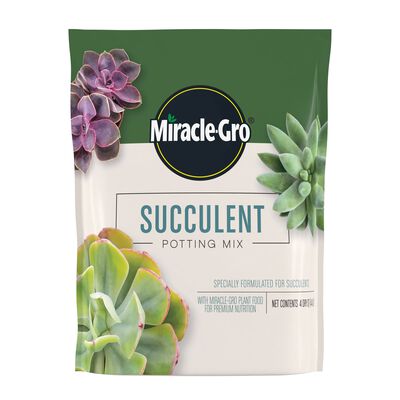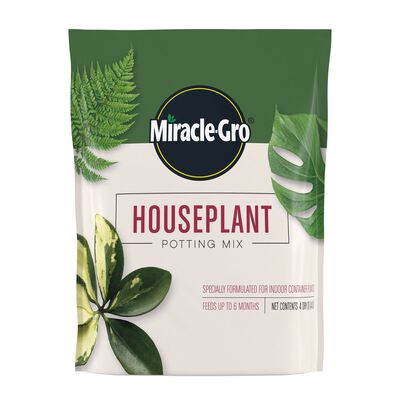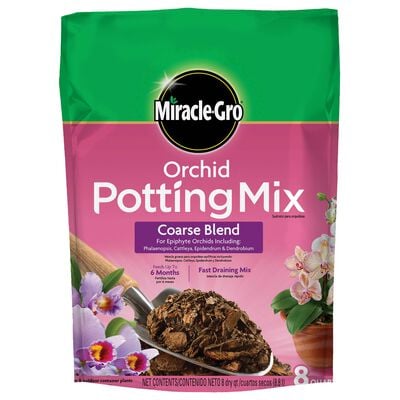
Movin' On Up
Give your leafy housemates a cozy new home with our super-easy guide to repotting plants.
Is it more of a minimalist terracotta pot kind of plant, or does it seem like it needs a showy textural vessel? When you love plants as much as you love home design, these are the kinds of debates you'll get into. A debate you might be less prepared for is when to repot your houseplants. Eventually, houseplants outgrow even the cutest, most thoughtfully-selected abodes. Luckily, knowing when to repot your plants is easy once you understand what to look out for. In this simple guide, you'll learn how to spot when your plants are cramped for space, and how to repot your plants into better fitting homes.
What Is Repotting?
Repotting is a practice for refreshing overcrowded potted plants and providing more space for growth. There are two ways to repot a plant. When a plant is showing signs that it needs a change in scenery, you can:
- Move it into a bigger pot so it has more space to grow
- Refresh the soil, carefully trim the roots, and loosen the root ball before placing it back into the same pot Both will unlock the cramped, knotted roots and allow your plant to stretch its legs again.
Why Do We Repot Our Plants?
While sometimes you may want to repot plants to refresh their style, repotting is actually an essential part of plant maintenance. With your love and care, your plants will begin to flourish. This means their roots will get longer, their foliage will get bigger, and they'll need more space to continue thriving.
Your plant may also become root-bound, which happens when roots begin growing along the inside of the pot. This can cause plants to have difficulty absorbing water and nutrients. So whether your plant simply looks like it's ready for a bigger pot, or you're noticing signs that it's struggling in its current home, it's time to repot your plant.
When to Repot Houseplants
If your plants have outgrown their current containers, their overall health is being affected. In addition to the signs below, you can also check the root ball by removing the plant from the pot. If they're packed too tightly together, it's time to repot.
Repot When Your Plant Says So
Signs your plant might be ready for some cushy new digs include:
- Halted plant growth
- Straggly appearance
- Older leaves begin to fade or yellow
- Leaves are wilted even after proper watering
- Plants become top-heavy and fall over easily
- Roots growing outside the drainage hole or above the soil
- Too-tightly wound root ball
Repot Your Plant Seasonally
Ideally, the best time to repot is in spring or summer when the plant is actively growing. This makes for a faster recovery. You can also repot in late winter, just before active growth starts back up again. Avoid repotting plants at the end of summer when plant growth slows, as it will take plants longer to recover.

How to Repot a Plant
Do all the signs point to your plant needing new digs? This guide to repotting houseplants will make the process easy for you and safe for your plants. Simply decide whether you’d like to pot them into a new vessel or use the same as before. Then follow the instructions for the method of your choice.
Tools for Repotting
Before getting started, make sure you have all the right tools. You’ll need:
- Pruning Shears: Use sharp Pruning Shears to snip off any dark brown, damaged roots.
- Drop Cloth: Repotting is a messy business, but a drop cloth saves time on clean-up.
- Potting Mix: New soil promotes a fresh, healthy start.
- Water: Use a Watering Can to hydrate newly potted plants.
- Trowel: A trowel will help you to scoop fresh soil in your pot.
- Soil Brush (optional): Conveniently sweep up loose soil.

Repotting Into a New Vessel
When your plant is showing signs that it's root-bound or simply needs more room to grow, repot it into a new vessel.
Step 1: Prep Your Plant
Water your plant the day before you plan to repot it. This will reduce stress on your plant and help it easily be removed from the pot.
Step 2: Choose the Right Pot
So many decisions go into picking the right pot for your plant. Which color will work best in your space? What shape will compliment your design? These are important questions for you, but your plant requires other considerations. Look for pots with a hole at the bottom to promote proper drainage. Your plant will also need a pot that is no more than 1 to 2 inches larger in diameter than its current pot—any bigger can result in retained moisture and lead to issues for the roots.
Step 3: Remove Plant & Loosen Roots
Then gently remove your plant from its current container, and tease out the roots. Massaging the base of the roots will release them from the shape of the pot. This is an important step because it will ensure that your plants can absorb water and nutrients, and keep them from developing in a circular pattern.
Step 4: Place Your Plant in New Digs
Fill your new pot about a third of the way full with indoor potting mix. Set your plant into the pot and fill in the rest of the space with soil. Leave about an inch of room from the top of the pot for easier watering.
Step 5: Help Your Plant Adjust
Use your watering can hydrate your plant so that it can better acclimate to its new surroundings. To prevent shock after repotting, set your plants in the same spot as they were before, or in a place with similar lighting.
Repotting Into the Same Pot
If you can tell that your plant needs to be spruced up, but you don't want it to get any bigger, simply repot it into the same container.
Step 1: Prep Your Plant
Follow the same instructions as above for prepping the plant.
Step 2: Remove Old Soil
After removing your plant from the pot, get rid of as much of the old soil as you can. If it's all locked into the plant's overgrown roots, you can gently shake it free as you tease out the root ball. Make sure to release the roots from their tangled mass, but be careful not to damage roots in the process.
Step 3: Trim the Roots
Inspect the root ball for any dark brown or black roots. Use sharp, clean pruning shears to snip these off. In order to keep a plant in the same size container, up to 25 percent of the root mass should be clipped off. This rejuvenates the plant and allows it to stay in the same size vessel.
Step 4: Return to Pot
Before setting your plant back into the container, give the pot a good scrub with water to remove any remaining sediments. Then replant using fresh indoor potting mix. Leave about an inch from the top of the pot for easier watering. Give your plant some water to help the roots settle in. To prevent shock after repotting, set your plants in the same spot as they were before, or in a place with similar lighting.


